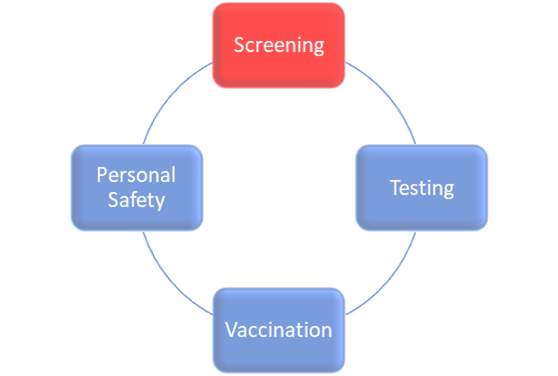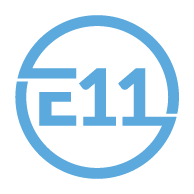When a Municipality / Broader Public Sector organization is looking to hire a new senior executive – they have two options. The first is to do the search themselves and take on the hiring and search process internally. The second is to partner with a specialized executive search firm that has a successful record and significant experience in placing senior level executives in their industry to manage the entire search process.
Municipalities and Broader Public Sector organizations operate under very strict budgets and sometimes the cost of paying to work with an executive search firm can seem high. As a result, some organizations choose to take on a new senior management search themselves. While this may seem like a smart cost saving measure at the time, an organization can face serious legal issues, lost opportunity and lost time if they make a mis-hire and are unable to find the “right fit”. In full transparency, let’s take a look at the actual hard costs (in terms of time and resources) that a Municipality / Broader Public Sector organization will face and incur when taking on a new senior management search themselves without the help of an executive search firm.
Phase I: Strategy Costs
This entire executive search process will need to be owned and managed by a senior executive leader within the organization with the know-how “to manage a process such as this”. The Municipality / Broader Public Sector organization should be comfortable with the ethics of poaching and causing another Municipality / Broader Public Sector organization to lose a senior executive. Many organizations do not allow this type of activity amongst each other. However, using a third-party such as an executive search firm, allows this type of activity to take place without any conflicts or issues. Candidates would feel much more comfortable dealing with a search firm rather than dealing with a competing organization. Finding and placing a new leader within the organization is a very delicate and intensive process. Let’s say you are a senior executive at a Municipality / Broader Public Sector organization who will own this search process, and earn roughly ~$150,000 per year or ~$78.00 per hour. This will be our baseline for evaluating and calculating time in terms of cost to the Municipality.
Before you begin your executive search for a new senior executive, you will need to identify stakeholders, any technology required, construct a strategy, organize documents and create milestones for this entire process. This will need to be a few hours of meetings and time for all internal stakeholders that will be involved to align on this process. Let’s say for example it will take roughly 15 hours collectively (or ~$1,200) of the senior leadership team’s time to decide on a strategy and get the proper processes set in place and approved.
Once you have a strategy and plan in place, you will need to create a job profile including: a list of requirements, responsibilities, qualifications, skills and credentials required of a candidate to perform in the role. As you are looking for a high-performing senior executive, this position profile must be carefully crafted as the senior executive will be the next leader for your organization for years to come. Cost will vary significantly depending on the amount of time involved for multiple stakeholders in this process.
Creating the job profile takes time, and the individuals that understand what is needed of a senior executive will need to collaborate within this part of the process. At this level, the senior leadership should be very involved in drafting and creating the position profile. Let’s say, for example, that four senior executives within the Municipality / Broader Public Sector organization will need to draft, review and approve the position profile spending about 10 hours of their time each on this profile totaling 40 hours or ~$3,200.
Total costs to your Municipality / Broader Public Sector organization at this point are: ~$4,400.00
Phase II: Talent Acquisition Costs
When a Public Sector organization decides to take on a senior management search themselves – they assume the process is as simple as posting to a job board site and letting the resumes flood in. The search has to start somewhere, and this is the quickest way to build a talent pipeline when you do not have a network of talented professionals to choose from or contact.
This inbound recruiting method works well for staffing more junior level roles, but when it comes to senior leadership positions it is not ideal. Posting a job to a job board will attract only “Active” candidates. Active candidates are eagerly looking for a new opportunity or are currently unemployed. At the leadership level the “actively looking” talent pool yields a large volume of mediocre talent. More often than not, these candidates are in-process for other opportunities as well and have a relatively low commitment to your organization or the position itself. There is no guarantee that the qualified candidates will flood in. In some cases, I have conducted searches where very few resumes responded to the posting. Most of our successful candidates are what we call “passive candidates.” These are candidates that are identified by reputation and directly sourced. Usually these candidates are not “actively looking” for a new role but open for opportunities to enhance their career. This a classic situation where direct poaching between organizations may be deemed unethical, however that is the business of an executive search firm. A professional executive search firm will do targeted research to determine who the most effective leaders are in this space and contact them directly.
The average posting cost a public sector organization will assume for several job boards to generate a talent pipeline can be upwards of ~$5,000.
Let’s say for example, that you have posted your senior executive position to several job boards and received several applications and now it’s time to review. This stage of the process should typically be handled by a senior level leader who is capable of answering all relevant questions and has the expertise to communicate well with senior executives.,. In addition, you will need to build your own deep relationships with candidates throughout this entire journey ensuring that confidentiality is maintained at all times. If the word gets out there that a potential candidate is looking, it could potentially risk their current employment which could lead to legal action. Only you and other key stakeholders will understand what skills and leadership style will be a match for your organization. The time required to carefully sift through, organize and prioritize these applications can take roughly 40 hours which can cost a Municipality ~$3,000.00 of your time.
Total costs to your Municipality / Broader Public Sector organization at this point are: ~$12,400.00
Phase III: Screening & Interviewing Costs
Next, you will need to screen via zoom or phone the top 20 candidates to begin the interview process. Let’s say that each initial candidate screening will take 1 hour per candidate and then some additional time to create the interview questions, draft and refine your feedback and notes, review resumes again and notify the bottom candidates that they will not be moving forward. This phase will cost the organization roughly 75 hours or ~$5,900.00
After the top 10 candidates have been selected, a second round of initial interviews will need to be conducted to gain a firmer understanding of which candidates to present to leadership and the other key stakeholders as the top choices for the role. These interviews will be much more in-depth and should take longer than the initial screening interviews. In addition to longer interviews, candidates again will need to be measured and assessed after each interview. This stage of the process can take roughly 60 hours or a total of ~$4,700.00
Total costs to your Municipality / Broader Public Sector organization at this point are: ~$23,000.00
Phase IV: Stakeholder Interviews & Final Assessments Costs
Once the top candidates have been screened, and put through an initial round of interviews – they will need to speak and interview with other senior leaders and stakeholders within the Municipality / Broader Public Sector organization. There will need to be at least 2 rounds of interviews between the senior leadership team and these top candidates. One of these interviews may be a panel interview with multiple stakeholders (3 for example) participating. After these interviews are conducted the team will need to come together to discuss their thoughts, notes and reactions to the candidates. This stage for one candidate can take up to 10 to 15 hours per candidate or ~$4,400.00
Now you must deliberate and choose to narrow it down to two finalist candidates. At this stage, some senior leadership stakeholders within the Municipality may want another round of interviews or have a candidate make a final presentation. In addition to these additional interviews or presentations, stakeholders will need to discuss and unanimously decide together on the best fit candidate. This can take roughly 15 hours total to complete and arrive at a selected finalist for a total cost of ~$1,200.
Total costs to your Municipality / Broader Public Sector organization at this point are: ~$28,600.00
Phase V: The Cost Of Making An Offer
At this phase, a verbal offer is made prior to drafting the official contract to be signed. This phase is relatively short, but sometimes negotiation and internal politics can extend this phase of the search considerably. Let’s say for example the candidate has decided to negotiate a few things into their contract which will require legal and HR to revise several drafts and receive approval each time. This stage can be outsourced or take roughly 10 hours of legal and HR’s time or ~$1,000
If the candidate accepts you will choose a start date which will be several weeks away. At this stage you have invested nearly ~$30,000 in your time to find a new senior executive. This time is in addition to your regular responsibilities and commitments in your everyday role.
Hidden Costs And Outcomes:
There are many variables that can happen during the executive search process such as your finalist candidate accepting another offer at a different organization. If this happens you will need to repeat some of Phase IV and consider those added time costs.
More often than not when a senior management search is conducted by a Municipality / Broader Public Sector organization internally without the help of an executive search firm, the selected candidate is not a good fit, which results in a mis-hire several months later. As a result, this candidate needs to be replaced, but since too much time has passed from your initial interactions with all candidates when beginning your search, you will need to restart at Phase III again and revisit the entire search process. This can add an additional ~$15,000 to your original time spent and bring your total internal time costs up to ~$45,000 to find a replacement candidate for the position.
The Cost Of Working With An Executive Search Firm.
Senior executives are key hires to your leadership team and your organization. They have a significant impact on the future of your community and organization and a controlling stake in that future for years to come. A miss-step by taking on a search yourself and hiring the wrong candidate can have monumental consequences and set a Municipality / Broader Public Sector organization back in many ways. When looking at the total internal costs associated with finding, interviewing and hiring the best senior executive, a Municipality / Broader Public Sector organization can save significant time, risk and money by partnering directly with an executive search firm to manage and run this entire process.
Typically, the search fee itself will be lower than the cost in time and resources that the organization will spend doing a search themselves, and a search consultant will be able to serve as a trusted advisor throughout this entire process. In summary, here are some things to consider when debating the value of working with an executive search firm:
- By posting and praying, you have no control over whether a good candidate will respond. If they don’t respond, what are you going to do?
- If the hired candidate leaves or is released or terminated, you are back to square one and must restart this entire process. With a search firm there is no additional cost as it is covered under a replacement guarantee.
- A credible search firm does research into your industry and assesses its network to identify who the key players are, and proactively reaches out to them to determine interest. Most of our successful hires have been people in this category that would have not considered the opportunity otherwise.
About The Author
Kartik Kumar is a Partner at Legacy Executive Search Partners and has over 15 years experience in successfully executing 250 projects within the Public and Private Sector, including Municipal Government and Public Libraries. Kartik has a Bachelor’s in Business Management from Ryerson University and an accredited certification in Diversity and Inclusion from Cornell University.
Prior to joining Legacy Executive Search Partners, Kartik has held several Managing Director roles within large national and international executive search firms. He has successfully developed an executive search practice across Ontario and Canada within Municipal Government and the Broader Public Sector.
Contact Kartik to learn more ([email protected]) about Senior Leadership Recruitment within the Public Sector across Canada.








.png)



